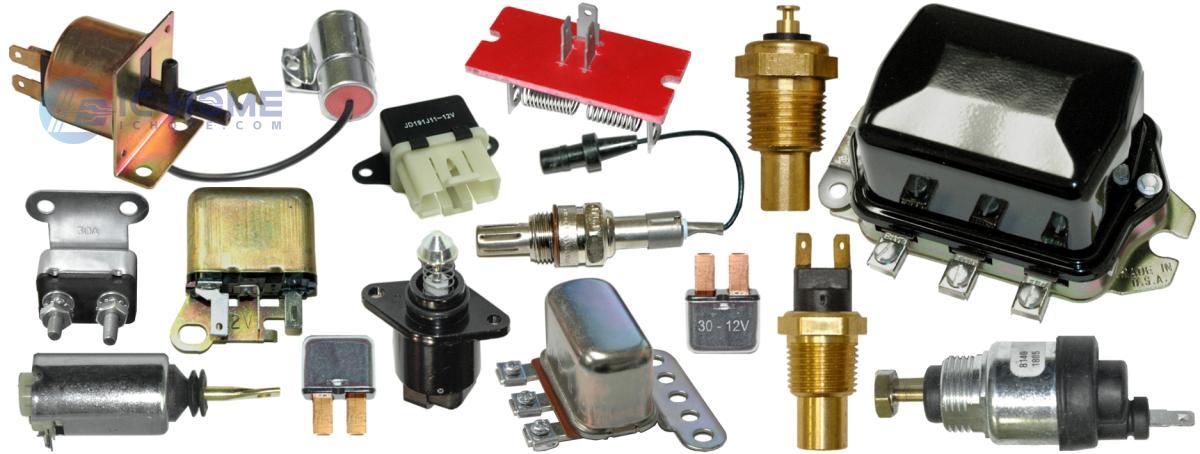Alternative Electronic Components for the Automotive Industry
The automotive industry is heavily reliant on electronic components, powering everything from engine control units (ECUs) to advanced driver-assistance systems (ADAS). However, the global semiconductor shortage and supply chain disruptions have created significant challenges for manufacturers and procurement teams. To maintain production efficiency and avoid costly delays, sourcing alternative electronic components has become a strategic necessity.

1. Why Alternative Components Are Necessary
Several factors contribute to the increasing demand for alternative electronic components in the automotive sector:
-
Supply Chain Disruptions: Shortages of semiconductors and other key components due to geopolitical issues, factory shutdowns, and shipping delays.
-
Obsolescence: Rapid technological advancements lead to the discontinuation of older components, forcing manufacturers to find suitable replacements.
-
Cost Management: Rising costs of certain components require manufacturers to explore more affordable alternatives.
-
Compliance and Standards: New automotive safety and environmental regulations may necessitate alternative components that meet updated industry standards.
2. Key Considerations for Choosing Alternative Components
When selecting alternative components, procurement teams should evaluate the following:
-
Compatibility: The alternative must have similar electrical and mechanical characteristics to ensure seamless integration.
-
Performance: The substitute should match or exceed the specifications of the original component.
-
Reliability and Quality: Automotive applications demand high durability, temperature resistance, and longevity.
-
Regulatory Compliance: Components must adhere to AEC-Q100 (for ICs) and AEC-Q200 (for passive components) standards.
-
Supplier Reliability: Choosing reputable manufacturers and distributors helps ensure quality and continuous availability.
3. Alternative Recommendations for Common Automotive Components
Below are some key alternative components for automotive applications:
a. Microcontrollers (MCUs)
Original Component: NXP S32K Series
Alternative Component: Infineon AURIX TC3xx Series
-
Infineon’s AURIX TC3xx MCUs offer comparable processing power and security features, making them a viable substitute for NXP’s S32K series in safety-critical applications.
b. Power Management ICs (PMICs)
Original Component: Maxim MAX20098
Alternative Component: ROHM BD9S300MUF-C
-
ROHM’s BD9S300MUF-C provides efficient power regulation with a wide input voltage range and high reliability, making it suitable for automotive applications.
c. MOSFETs
Original Component: ON Semiconductor NVMFS5C466NL
Alternative Component: Vishay SQJQ480E
-
Vishay’s SQJQ480E MOSFET has low RDS(on) and high efficiency, making it a strong alternative to ON Semiconductor’s widely used part in automotive powertrain applications.
d. Automotive-Grade Capacitors
Original Component: Murata GRM Series MLCCs
Alternative Components: TDK C3216X5R1H225K160AB, Samsung Electro-Mechanics CL31A225KB9LNNC, Taiyo Yuden UMK316BJ225KD-T
-
These multilayer ceramic capacitors (MLCCs) meet AEC-Q200 standards, ensuring high reliability and durability in harsh automotive environments.
e. Sensors (Pressure & Temperature)
Original Component: Bosch BMP280 Pressure Sensor
Alternative Component: TE Connectivity MS5611
-
TE Connectivity’s MS5611 pressure sensor offers high precision and low power consumption, making it a suitable alternative for Bosch’s BMP280 in automotive applications.
4. Sourcing Strategies for Alternative Components
To effectively source alternative components, procurement teams should:
-
Work with Trusted Distributors: Partnering with authorized distributors ensures authenticity and quality assurance.
-
Leverage Cross-Reference Tools: Many suppliers offer cross-reference databases to find suitable replacements quickly.
-
Engage in Supplier Diversification: Reducing reliance on a single vendor helps mitigate supply chain risks.
-
Verify Components Through Testing: Conduct rigorous testing to ensure functional equivalence and reliability in automotive applications.
Conclusion
As the automotive industry continues to evolve, sourcing alternative electronic components is no longer just a backup plan but a necessity for resilience and cost efficiency. By carefully evaluating performance, compatibility, and regulatory compliance, procurement teams can successfully integrate alternative components without compromising safety and reliability. Collaborating with reputable suppliers and leveraging industry tools can streamline the selection process, ensuring a stable and sustainable supply chain for automotive electronics.




